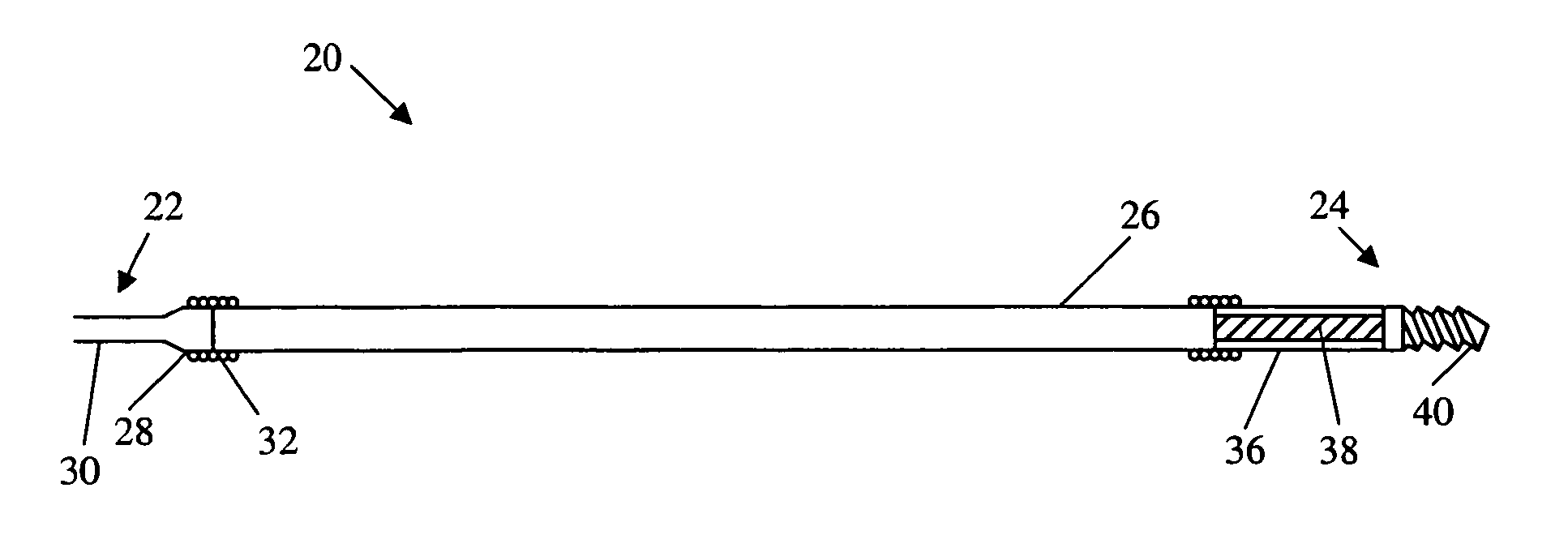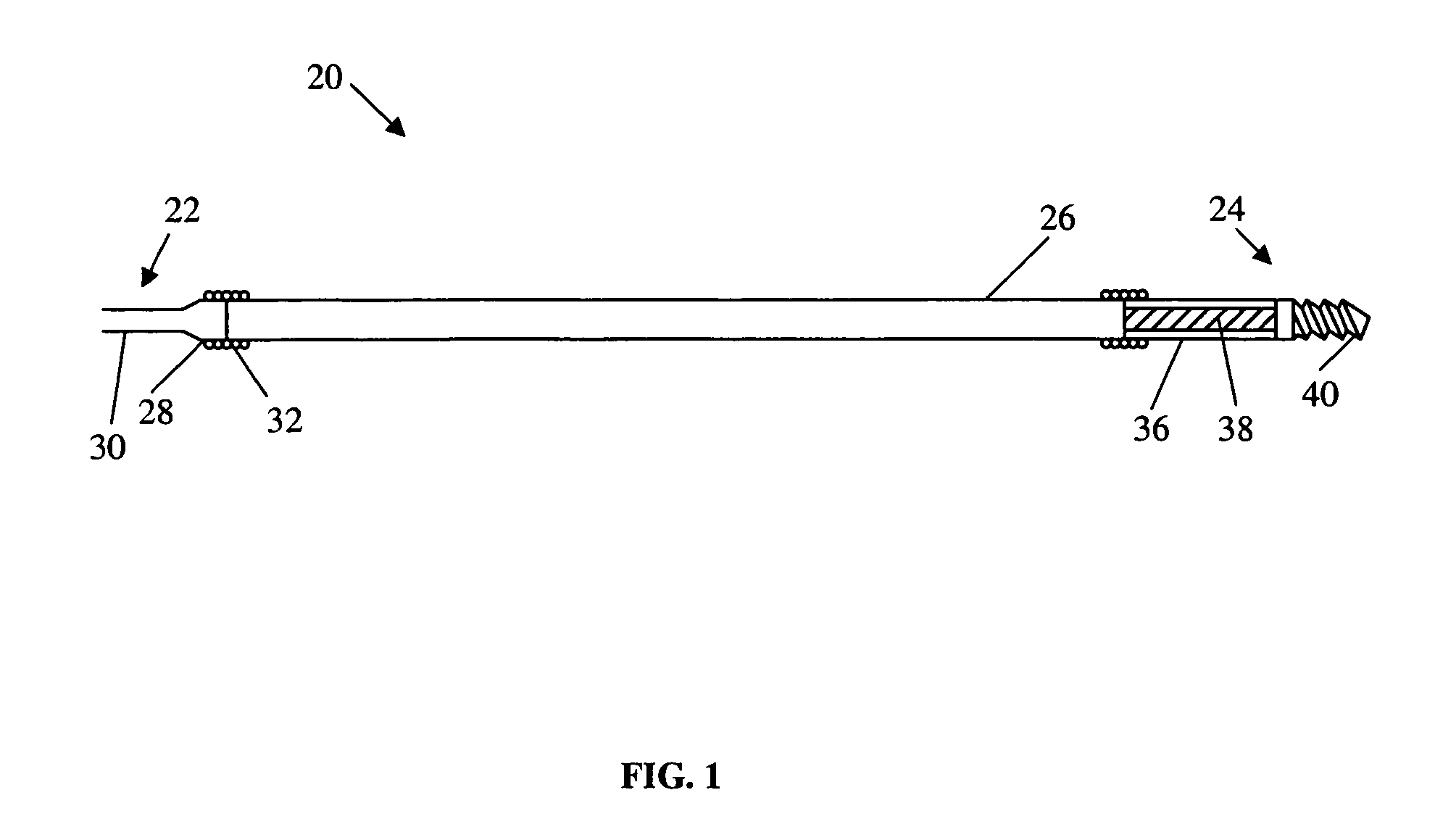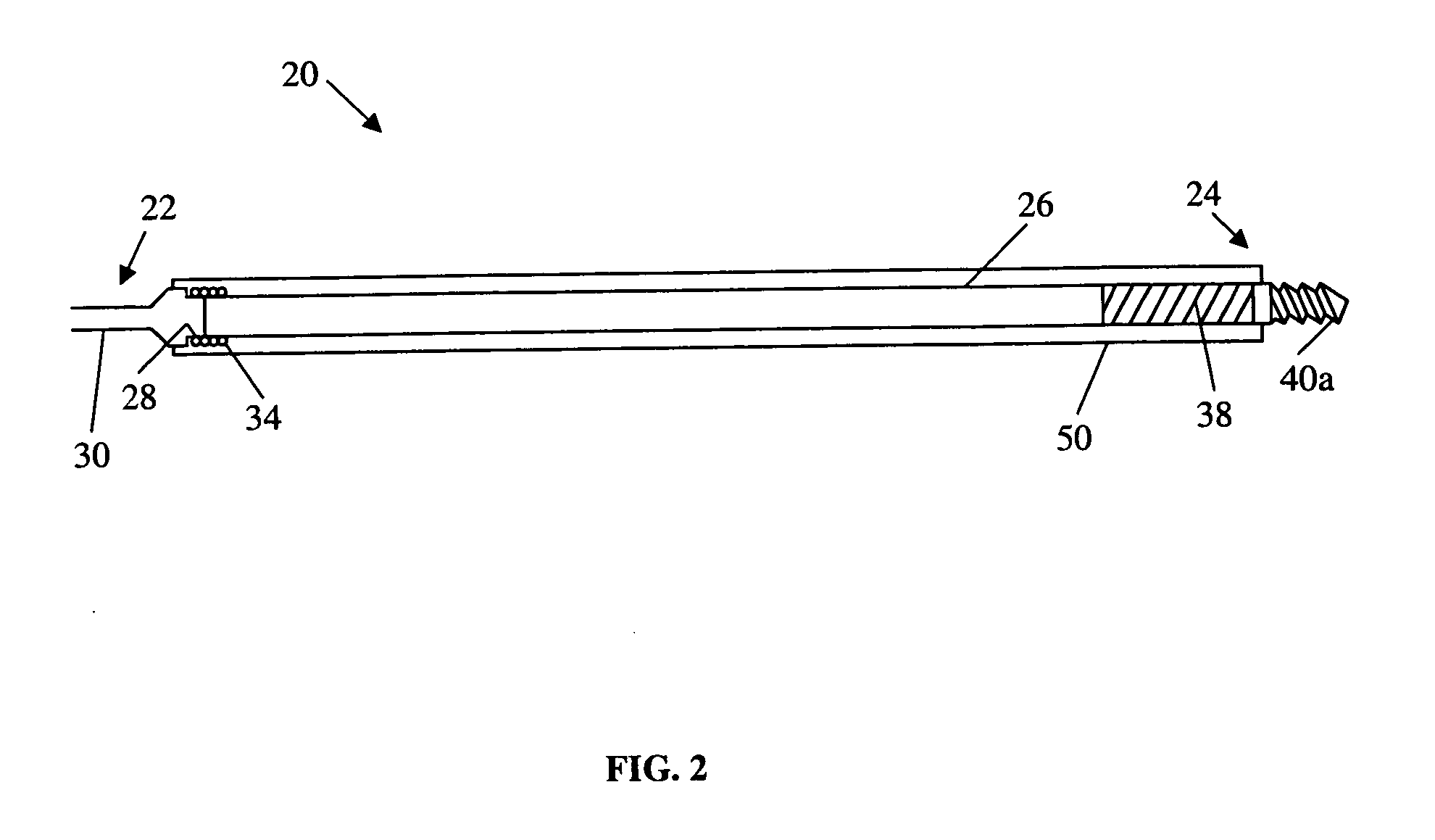Magnetic guidewire for lesion crossing
a magnetic guidewire and lesion technology, applied in the field of guidewires, can solve the problems of guidewire becoming increasingly difficult to control, flexible guidewire buckles, and inability to provide passage, etc., and achieve the effect of facilitating passag
- Summary
- Abstract
- Description
- Claims
- Application Information
AI Technical Summary
Benefits of technology
Problems solved by technology
Method used
Image
Examples
Embodiment Construction
[0008] A first preferred embodiment of a magnetically navigable medical guidewire is indicated generally as 20 in FIG. 1. The guidewire 20 has a proximal end 22 and a distal end 24 and comprises a flexible core wire 26 extending from the proximal end substantially to the distal end. The core wire 26 can be made of Nitinol or other suitable material. As shown in FIG. 1, the proximal end 22 of the guidewire 20 includes a conventional connector 28 having a proximal landing 30, to which a core wire 32 is attached. The attachment of the core wire 26 is preferably done by a coil 34 extending over the core wire 32 and the proximal landing 30. The distal end of the core wire 26 is attached in the same manner to a metallic cylinder or sleeve 36.
[0009] The cylinder or sleeve 36 may be made of, or at least plated with a radiopaque material so that the distal end of the guidewire 20 can be seen in x-ray imaging. The sleeve 36 is preferably made of gold, a gold alloy, or other biocompatible mat...
PUM
 Login to View More
Login to View More Abstract
Description
Claims
Application Information
 Login to View More
Login to View More - R&D
- Intellectual Property
- Life Sciences
- Materials
- Tech Scout
- Unparalleled Data Quality
- Higher Quality Content
- 60% Fewer Hallucinations
Browse by: Latest US Patents, China's latest patents, Technical Efficacy Thesaurus, Application Domain, Technology Topic, Popular Technical Reports.
© 2025 PatSnap. All rights reserved.Legal|Privacy policy|Modern Slavery Act Transparency Statement|Sitemap|About US| Contact US: help@patsnap.com



